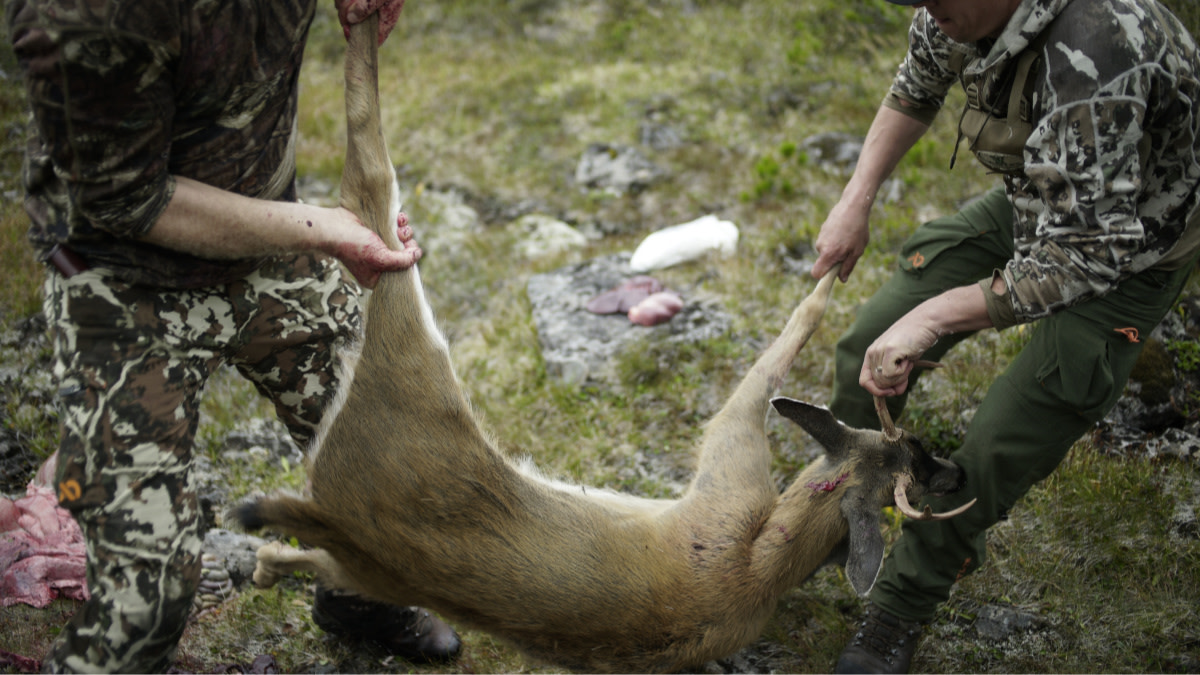
My first exposure to blacktail deer came during late summer, high above treeline on an unnamed mountain on Alaska’s Prince of Wales Island. Upon seeing that first buck, I was immediately struck by just how different Sitka blacktails are from the whitetails and muleys I’d hunted all my life. Physically, they were much smaller, with short, stubby legs and a compact body. Their antlers weren’t very big, either. Still, the coastal rainforests and mountainous alpine country they inhabited made for a memorable and unique hunting experience I look forward to repeating.
If you’re interested in going on your first blacktail deer hunt, it’s important to know that, unlike whitetails and mule deer, your choices are limited to only a few states. Blacktail deer are divided into two subspecies. The larger Columbian blacktail, which more closely resembles mule deer, is found from the coastal mountain ranges west to the ocean from central California to southern British Columbia. The smaller Sitka blacktail is native to the islands and coastal rainforests of Southeast Alaska and B.C. Although hunters are limited to four states and one province, tags are generally easy to come by.
Alaska
For adventurous, do-it-yourself hunters, Alaska is the top choice for blacktail deer hunting. Here you can easily combine fishing for salmon, halibut, and other species with a hunt. In most deer hunting units, you can purchase multiple tags over the counter. Public land hunting opportunities are abundant in the expansive Tongass National Forest of Southeast Alaska. Many local deer hunters use the extensive logging road system in the Tongass to find good habitat, while dedicated DIY hunters often rent skiffs and Forest Service cabins to access remote country where roads don’t exist.
While Sitka blacktails are typically smaller than the Columbian blacktails to the south, there are some notable exceptions. Sitka blacktails have been introduced to the Prince William Sound area, as well as Kodiak and Afognak islands in the Gulf of Alaska. The blacktails there grow much larger in both body and antler size than their native cousins in Southeast. Blacktail seasons run long in Alaska, usually from late summer through early winter.
Oregon
Most people don’t think of Oregon as a state where non-resident hunting tags are widely available. But blacktail deer are a welcome exception. While some deer tags are only available through a limited draw, even out of state hunters can buy over-the-counter archery and rifle blacktail tags for many units. Archery season runs from late August through late September, with rifle season running from the end of archery season until late November.
Blacktails can be found from the top of the Cascade and Coast ranges and everything westward to the Pacific. Most hunting takes place on either public National Forest lands or private timber company leases. Deer densities are higher on the managed, timber company forests, but hunters are required to pay reasonable permit fees in order access these properties. Blacktail hunters tend to either still hunt slowly through thick stands of timber or glass open clear cuts. Success rates hover between 20% to 40%, depending on the hunt area.
Washington
Washington is another state that does not cater to non-resident big game hunters. Most of the state requires special draws to hunt elk, whitetail and mule deer. However, hunters can purchase a general Washington deer license to access many of Western Washington’s blacktail areas over the counter.
Deer numbers here aren’t as high as Oregon and California, but blacktails can be hunted here on the general deer license on both National Forests and private timber lands. Hunters interested in hunting timber company properties are advised to do their research well in advance. Permits for hunting timber leases generally sell out long before the season opener.
Archery seasons take place in September and December, and rifle seasons are split between October and November. Blacktails can be hunted in high alpine basins during the early seasons, while November and December hunters will find deer in larger numbers at lower elevations.
California
Like Washington and Oregon, California usually isn’t near the top of the list for out-of-state hunters. But, if you’re interested in killing a big blacktail buck, the Golden State kicks out more trophy Columbian blacktails than any other destination.
Blacktail deer tags are sold over the counter until a quota is reached. Blacktail hunters can purchase archery or rifle tags for either the A or B zones. The A zone is comprised largely of private lands along the central and southern coast, while public lands dominate the B zone in Northern California. B zone tags sell out every year. Archery seasons open as early as July, while rifle seasons start in mid-September and end in mid-October.
During the hot summer months, look towards cooler alpine basins for blacktails on public lands. In Alaska, Washington and Oregon most blacktail hunting takes place in dense coastal rainforests and, while blacktails do inhabit that type of habitat in northern California, they’re also common in more arid, open oak forests and ranchlands where glassing and spot-and-stalk hunting is possible during rifle season.
Worth the Trip
Hunters who have easy access to good whitetail or mule deer hunting might not think it’s worth making a trip for blacktail deer. Those hunters haven’t crept through a misty, mossy rainforest trying to slip up on a blacktail buck that knows to disappear into dense cover at the first sign of danger. Nor have they climbed to a lush, remote alpine basin to glass for bachelor groups of blacktail bucks still wearing velvet and red summer coats. The truth is, anyone who loves hunting new places and eating high-quality venison will enjoy chasing blacktail deer.





